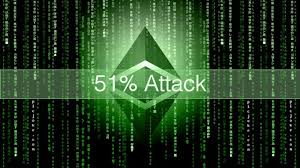The Rise of Ethereum: Revolutionising the Blockchain World

Introduction
Ethereum, launched in 2015 by Vitalik Buterin and his team, has significantly impacted the cryptocurrency landscape, serving as a decentralised platform harnessing blockchain technology. Its relevance has surged in recent years as more individuals and institutions recognise its potential beyond digital currency, including smart contracts, decentralised applications (dApps), and more. Understanding Ethereum is crucial for investors, developers, and users navigating the evolving digital economy.
Recent Developments in Ethereum
As of late 2023, Ethereum has undergone a significant transformation with its transition from a proof-of-work (PoW) consensus mechanism to proof-of-stake (PoS) following the Ethereum 2.0 upgrade, known as ‘The Merge’. This shift aims to improve energy efficiency and network security, as it reduces energy consumption by about 99%. The upgrade has been well-received, with many in the crypto community viewing it as a pivotal moment in Ethereum’s evolution.
Moreover, Ethereum’s decentralised finance (DeFi) sector has witnessed exponential growth, with the total value locked in DeFi applications surpassing $100 billion. Projects such as Uniswap and Aave have enabled users to trade and lend digital assets without traditional intermediaries, attracting significant attention from financial institutions seeking to integrate blockchain technologies into their operations.
Challenges and Future Outlook
Despite these advancements, Ethereum faces several challenges, including scalability issues and high transaction fees during peak periods. Developers are actively working on Layer 2 scaling solutions, such as Optimistic Rollups and zk-Rollups, to alleviate congestion and reduce costs while maintaining the integrity and security of the network.
Forecasts suggest that Ethereum will continue to lead the blockchain space as more developers build innovative solutions on its platform. As institutional interest deepens and regulatory frameworks evolve, Ethereum’s position as a foundational technology for the Web 3.0 paradigm appears secure. The significant potential for growth and adaptation will likely attract new users and investors worldwide.
Conclusion
In summary, Ethereum has established itself as a cornerstone of the blockchain ecosystem, with its unique capabilities poised to revolutionise various sectors. As it continues to adapt and evolve, understanding its implications and potential is essential for anyone involved in the cryptocurrency space. Ethereum not only defines the future of digital currencies but also shapes a profound shift in how we interact with digital systems.









